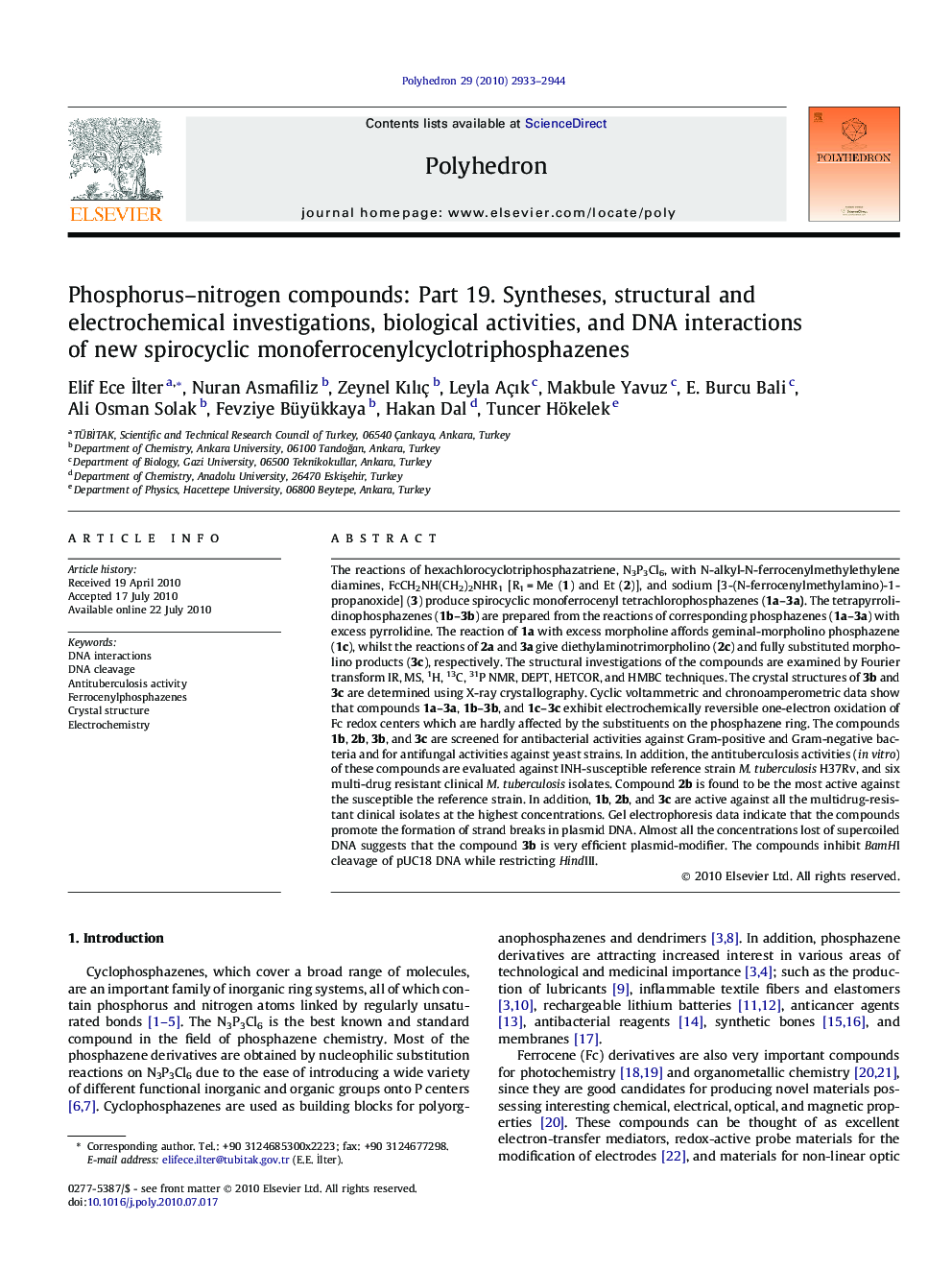| کد مقاله | کد نشریه | سال انتشار | مقاله انگلیسی | نسخه تمام متن |
|---|---|---|---|---|
| 1338827 | 979682 | 2010 | 12 صفحه PDF | دانلود رایگان |

The reactions of hexachlorocyclotriphosphazatriene, N3P3Cl6, with N-alkyl-N-ferrocenylmethylethylene diamines, FcCH2NH(CH2)2NHR1 [R1 = Me (1) and Et (2)], and sodium [3-(N-ferrocenylmethylamino)-1-propanoxide] (3) produce spirocyclic monoferrocenyl tetrachlorophosphazenes (1a–3a). The tetrapyrrolidinophosphazenes (1b–3b) are prepared from the reactions of corresponding phosphazenes (1a–3a) with excess pyrrolidine. The reaction of 1a with excess morpholine affords geminal-morpholino phosphazene (1c), whilst the reactions of 2a and 3a give diethylaminotrimorpholino (2c) and fully substituted morpholino products (3c), respectively. The structural investigations of the compounds are examined by Fourier transform IR, MS, 1H, 13C, 31P NMR, DEPT, HETCOR, and HMBC techniques. The crystal structures of 3b and 3c are determined using X-ray crystallography. Cyclic voltammetric and chronoamperometric data show that compounds 1a–3a, 1b–3b, and 1c–3c exhibit electrochemically reversible one-electron oxidation of Fc redox centers which are hardly affected by the substituents on the phosphazene ring. The compounds 1b, 2b, 3b, and 3c are screened for antibacterial activities against Gram-positive and Gram-negative bacteria and for antifungal activities against yeast strains. In addition, the antituberculosis activities (in vitro) of these compounds are evaluated against INH-susceptible reference strain M. tuberculosis H37Rv, and six multi-drug resistant clinical M. tuberculosis isolates. Compound 2b is found to be the most active against the susceptible the reference strain. In addition, 1b, 2b, and 3c are active against all the multidrug-resistant clinical isolates at the highest concentrations. Gel electrophoresis data indicate that the compounds promote the formation of strand breaks in plasmid DNA. Almost all the concentrations lost of supercoiled DNA suggests that the compound 3b is very efficient plasmid-modifier. The compounds inhibit BamHI cleavage of pUC18 DNA while restricting HindIII.
The new spirocyclic monoferrocenylphosphazenes (1a–3a, 1b–3b, and 1c–3c) are synthesized from the reactions of N3P3Cl6 with the appropriate amines. Electrochemical experiments on the ferrocenylphosphazenes reveal basically reversible redox peaks. The ferrocenylphosphazenes are susceptible to Mycobacterium tuberculosis H37Rv and multi-drug resistant clinical isolates, and induce conformational changes on the DNA helix.Figure optionsDownload as PowerPoint slide
Journal: Polyhedron - Volume 29, Issue 15, 14 October 2010, Pages 2933–2944